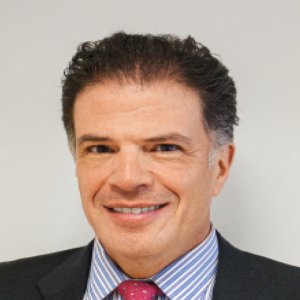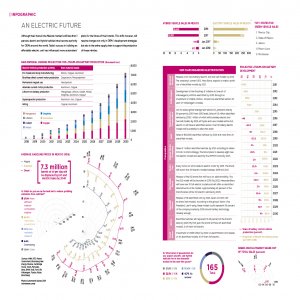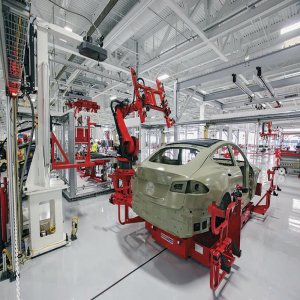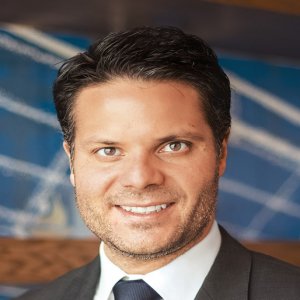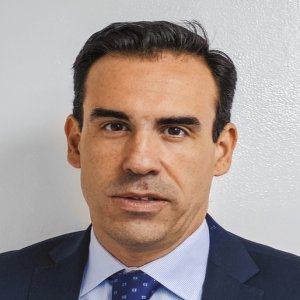Parking Lot Giant Puts Faith in New Mexican OEM

STORY INLINE POST
Q: What spurred a parking lot management company like COPEMSA to launch an auto OEM and develop an electric vehicle?
A: From a business standpoint, we realized that due to the time required for electric vehicles to recharge, charging infrastructure could only be located in houses, office buildings or parking lots — places where people leave their cars for long periods. COPEMSA manages a large parking infrastructure spread across all of Mexico’s metropolitan areas, which gives us natural access to this business opportunity. Additionally, we believed this would be a good opportunity to reach out to future clients. Approximately 5 million vehicles circulate in Mexico City, plus close to 2 million more that come from the Mexico City metropolitan area. COPEMSA’s parking lots register around 7 million entries per month, which means we have access to practically the entire client base that could potentially buy a new car. This gives us an insight into what car owners are looking for and why.
Looking at the problem subjectively, we were not happy living in a country without its own OEM, particularly when the country has a strong automotive focus; a quality, efficient and well-structured supply chain and the necessary talent to develop its own technology. Our inconformity allowed us to bring a different and innovative proposal to the market.
We were initially hesitant to launch our vehicle because we were not sure what reaction we would get from the public. Zacua would be a new brand in a highly competitive market, a Mexican brand and it would focus on electric vehicles; our proposal was one paradigm shift after another. However, we were pleased to find that the market was interested in our proposal. Clients were attracted to our designs, they agreed that the car’s capabilities could help solve the city’s mobility issues but beyond that, they liked that it was a Mexican vehicle.
Q: Considering the unsuccessful previous ventures of Mexican OEMs, how are you ensuring Zacua’s success in the automotive market?
A: We do not want Zacua to be a mass-market brand. Our product targets a changing market that in the last years has been willing to pay more and even relinquish some comfort in favor of an innovative and more socially conscious offering. That being said, we had to find a way to make the project viable and bankable.
We spent years looking for the right partners to develop our technology and engineering, enabling us to create a proposal that was ready for the global industry. Although we have found these collaborators, we are still pacing ourselves to ensure our success in the market. After the M2 and M3 release in 2017, we announced we would market 100 units in our first year, 200 in the second and 300 in the third. We had a slight setback in our manufacturing output due to the Sept. 19, 2017 earthquake that impacted our operations in Puebla and forced us to move from the city center to the Puebla 2000 industrial park. But commercially speaking, we expect to beat these targets.
Q: How soon do you expect sales of the M2 and M3 to generate a profit for Zacua?
A: We do not evaluate Zacua from an economic perspective. Rather than focusing on the returns, we want to develop a strong company, which would be a good strategy for the Mexican economy as a whole. We are not worried about our profits at the moment and all resources entering the company are being reinvested to support our technology development process.
How long it takes to recover our investment depends on many variables. We could expect to see a profit in five or six years but if we have remarkable results, we could recover everything in just one or two years. Furthermore, we are not developing the M2 and M3 from zero. Thanks to our strategic relationship with Chatenet, we had access to the company’s designs and we have remained ahead of our projections.
We are now developing a four-seater model from scratch that will require a significant investment. Depending on how the project advances and how the market evolves, the process might take three years, which means we would see a return on that investment in the next eight to 10 years.
Q: How will Zacua manage its operations from a distribution standpoint?
A: Our distribution model will be purely digital, except for a single showroom in the Polanco area of Mexico City that will serve as a gathering point so clients can see the vehicles. Other than that, our business will rely only on digital marketing. We believe this is the best way to commercialize our vehicles and we do not want to reduce our margins by adding distribution intermediaries. This allows us to guarantee the best prices for our end customers.
We also have an alliance with the Car Fast platform, which will serve as an additional channel for clients to get to know the vehicles and find a suitable financing alternative. Electric vehicles do not require as much maintenance as internal combustion-engine models due to the simplicity of the equipment. As a result, we do not need a massive aftersales infrastructure.
In the following months we will be more active in our marketing campaigns, not only looking to be in the mind of the consumer as a new brand but also as an agent of change toward a more environmentally conscious future. In the end, we want to earn the public’s trust through a clean strategy.
Q: Why did you not choose Zacua vehicles to support your other venture focused on car sharing, xixo?
A: Zacua owners who spend approximately MX$500,000 (US$27,000) on their vehicle do not want that same model to be in the car-sharing economy. Therefore, we have chosen another brand of clean cars called Tazzari, among others, to implement our car-sharing service. We expect to launch this new business before the end of 2018 but right now our priority is to invest in Zacua.
Q: As Zacua’s operations grow, how will you garner the necessary resources for its development?
A: Originally, the company was a family-and-friends venture. However, a fellow C-level executive from a financing institution advised me to pitch the idea of investing to our current suppliers to gauge their reaction. We approached our powertrain partners from Dynamik Technological Alliance — originally from Spain’s Basque Country — and they were eager to join the project. We are still open to new investors but beyond the monetary offering, we want partners that can provide an added value and new ideas to Zacua.
Q: How attractive is Mexico as an engineering destination and what can national players do to improve this image?
A: We have all the elements in place to advance as an automotive design and engineering destination. There is a strong and fully articulated supply chain, supported by quality operations and capable technical and engineering talent. We are also at the right time to make this transition and the heat we have been receiving from US President Donald Trump should encourage the country to reflect on its current capabilities and lessen its dependence on low-cost manufacturing activities.
Big national companies such as Grupo Carso and Bimbo are already investing in the development of a Mexican automotive industry and that will only incentivize more players to participate in the market. Moreover, as automotive technology moves toward alternative motorization, the technological barriers that prevented companies from participating in the supply chain are removed. Internal combustion engines are overly complex and require the combination of several systems and technologies. Meanwhile, electric, hybrid and fuel-cell systems are simpler and invite more companies to participate in their development other than the big OEMs and Tier 1 suppliers.
